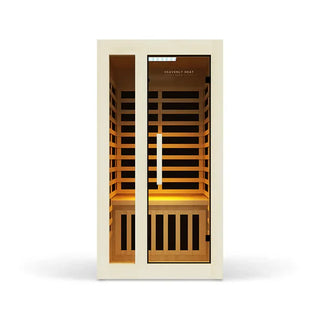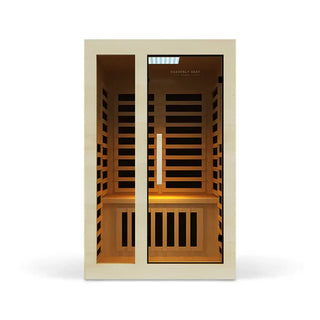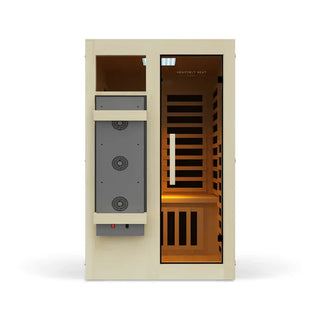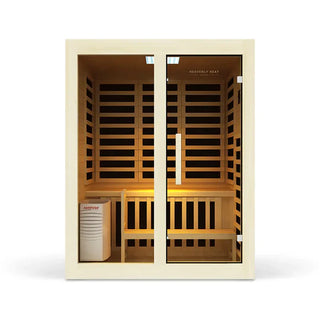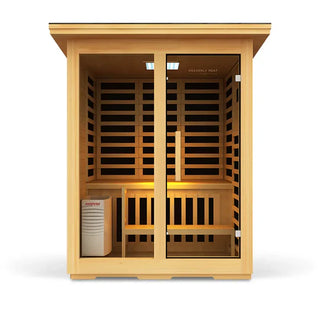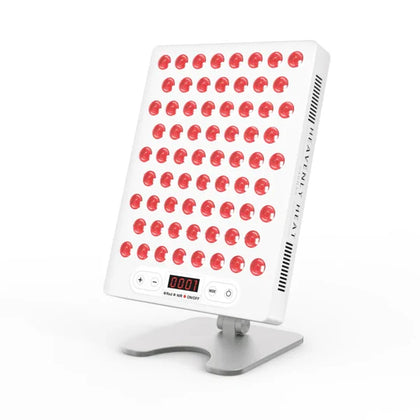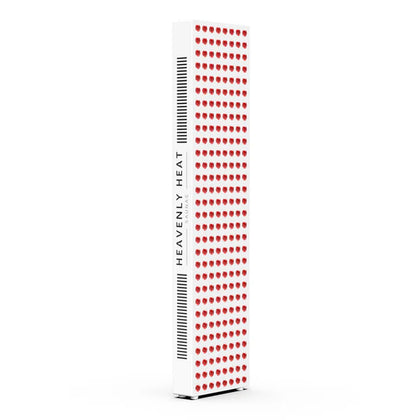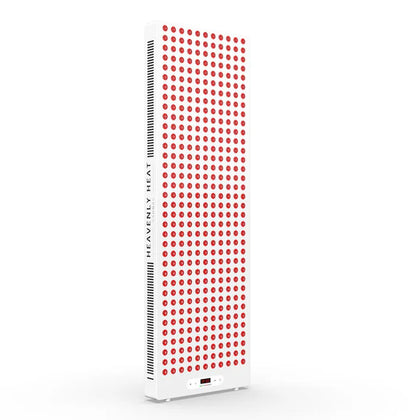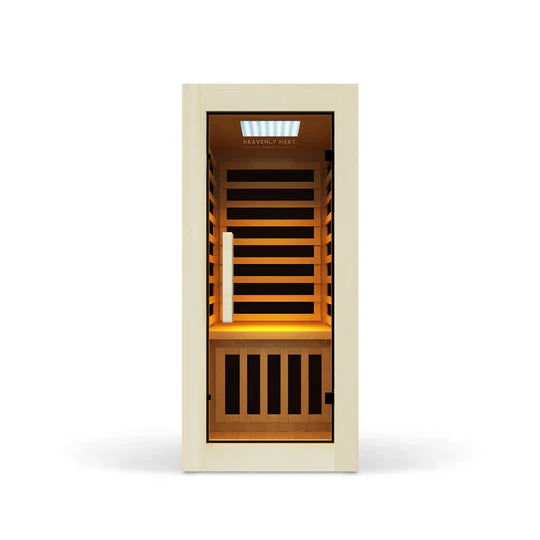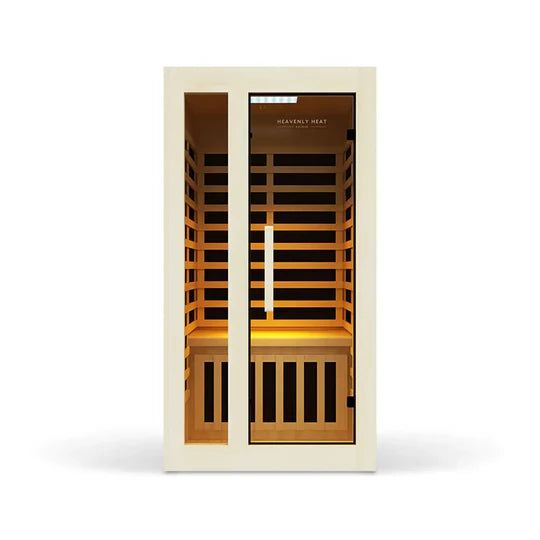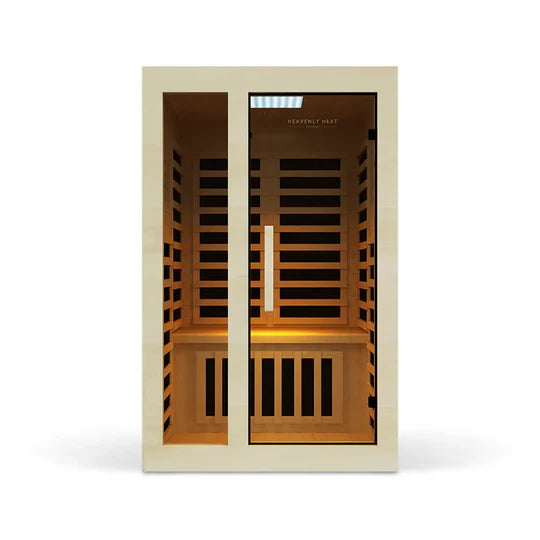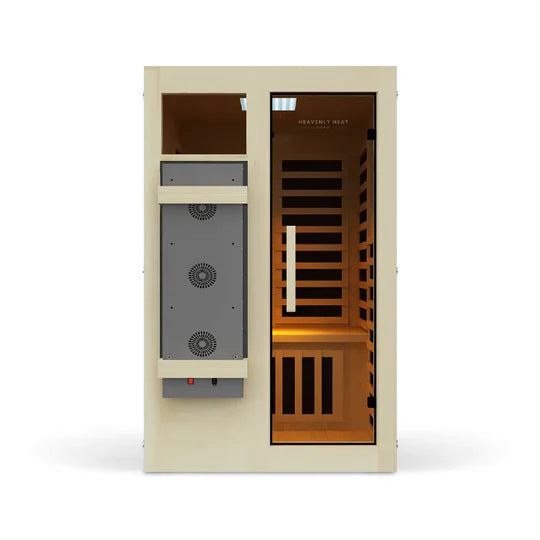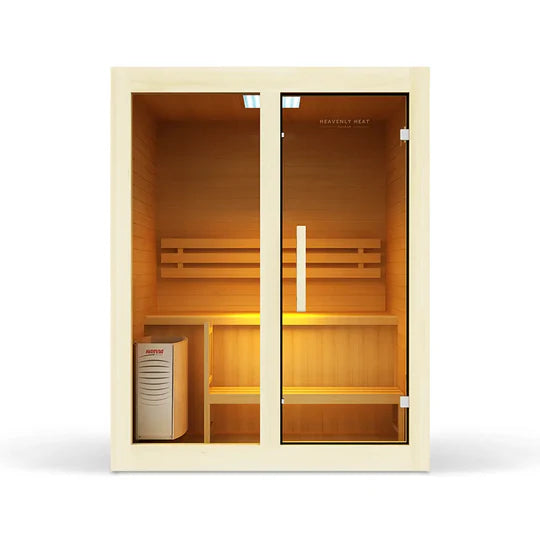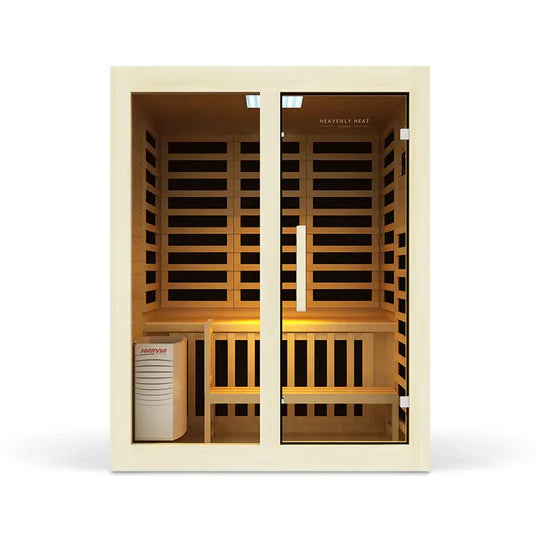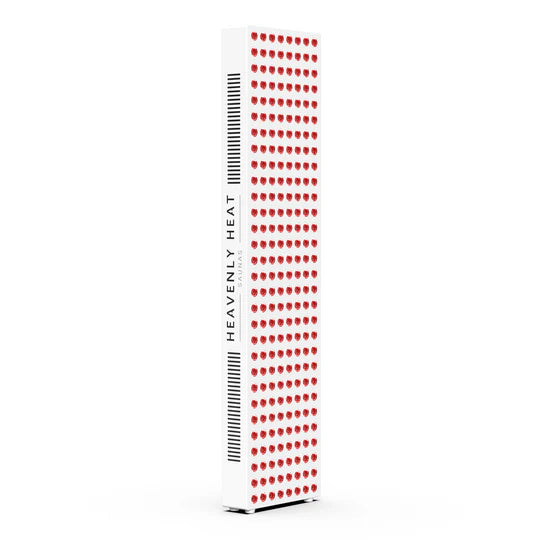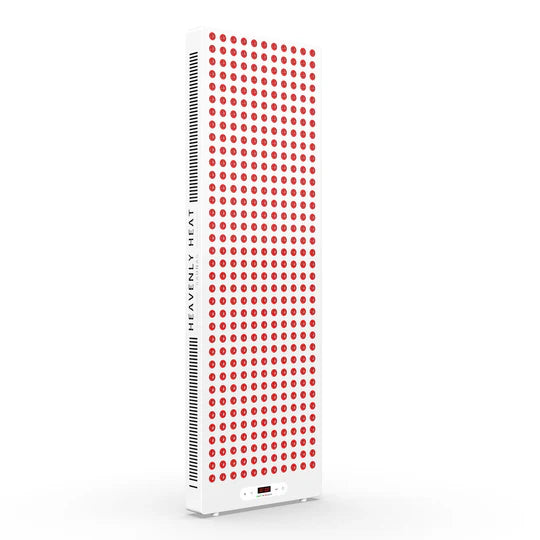How Long to Use Red Light Therapy on Face?
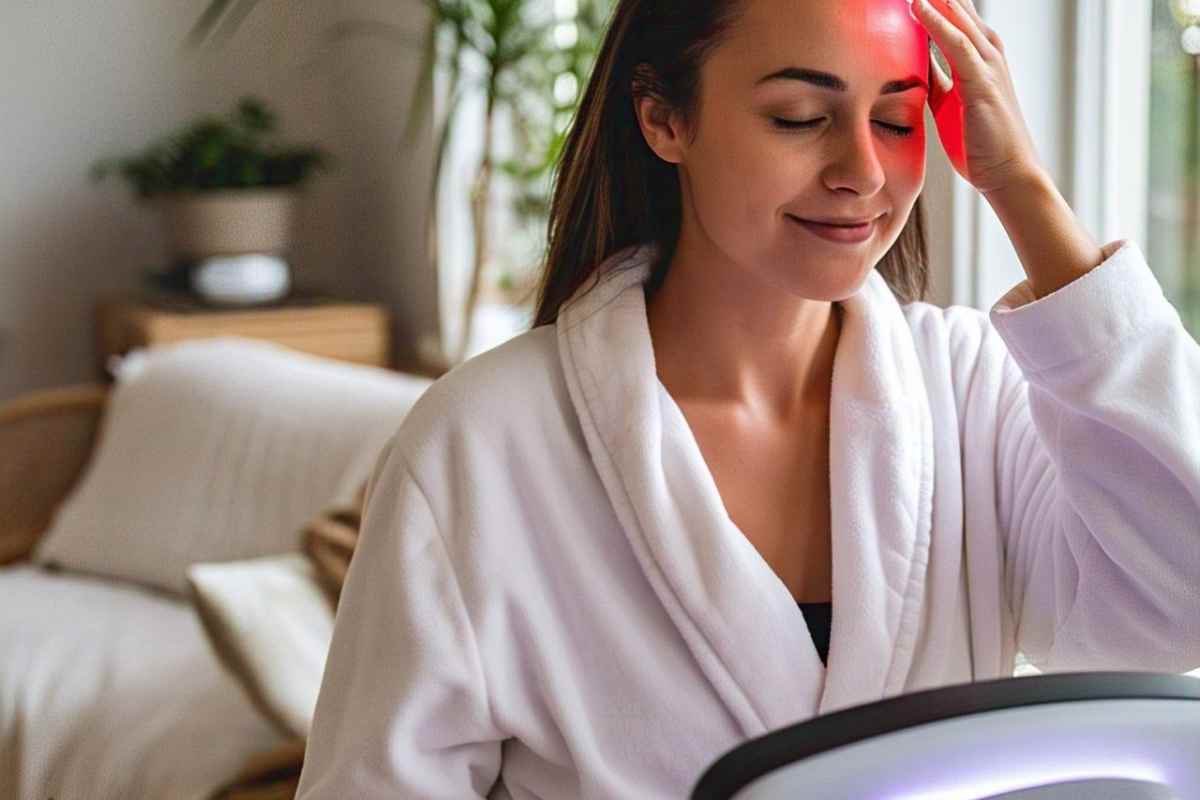
Table of contents
Struggling with how long to use red light therapy on your face for the best results?
Overdoing it can lead to irritation, while too little may not give you the benefits you're hoping for.
It's frustrating to not know the sweet spot. Luckily, understanding the right duration can help you maximize results and achieve healthier, glowing skin. Here's what you need to know!

Key Takeaways
Stick to the Recommended Duration: Sessions should last 10-20 minutes, 3-5 times per week for best results.
Consistency Matters: Regular use over several weeks leads to noticeable improvements in skin health.
Avoid Overuse: Longer sessions won’t speed up results and may cause irritation or sensitivity.
Choose the Right Device: Professional devices work faster, while at-home devices require longer sessions.
- Optimize Your Routine: Using red light therapy at the right time and distance enhances its effectiveness.
What is Red Light Therapy?
- Red light therapy works by reaching deep into your skin: Red light therapy uses low-level red light to penetrate your skin and activate your cells. This helps your body work better from the inside out, especially when it comes to healing and skin repair.
- It helps your skin heal and look younger: By boosting collagen, reducing swelling, and speeding up recovery, red light therapy helps with common skin problems like wrinkles, acne, and scars. It supports natural healing without harsh treatments.
- The right light makes all the difference: The most effective wavelengths for red light therapy are between 630nm and 850nm. These go deep enough to work well but don’t damage the skin, that’s why the right range matters.
- Studies show it really improves your skin: Research proves that red light therapy doesn’t just sound good, it actually works. It helps your skin feel smoother, look fresher, and become healthier over time.
- Red light helps the surface, infrared works deeper: Red light therapy focuses on the skin’s surface, while infrared therapy goes deeper into your body. That makes red light better for skin care and infrared better for deeper issues like joint pain.
- Red light is gentle and doesn’t feel hot: Unlike infrared therapy, red light therapy stays cool during treatment. You don’t feel heat, so it’s comfortable and relaxing to use.
- Most people can use it safely at home: Red light therapy is safe for most people, but if you have skin cancer, eye problems, or take light-sensitive medications, check with your doctor before starting.
- It’s a simple way to get healthier skin: With all its benefits and no downtime, red light therapy is an easy and safe way to support better skin, right from home.
Why is Red Light Therapy Popular for Facial Skin?
Collagen Boosting
- Red light helps your skin make more collagen: By improving how your cells work, red light therapy encourages your skin to create more collagen. This helps smooth out fine lines, even your skin tone, and improve overall texture, says Dr. Tiffany J. Libby .
- It wakes up the skin cells that build firmness: Red light stimulates fibroblasts, these are the skin cells that naturally make collagen and elastin. At the same time, it slows down the enzymes that break collagen apart, helping your skin stay stronger for longer.
- More collagen makes your skin look firmer and smoother: As your collagen levels rise, your skin becomes more elastic and firm, giving it a smoother and younger look.
- You need to use it regularly to see real changes: To get the best results, use red light therapy about 15–20 minutes per session, three to five times a week. Most people start noticing improvements in just three weeks, but staying consistent is what keeps your skin looking youthful and healthy.

Improved Skin Tone and Texture
- Red light makes your skin look smoother by boosting collagen: Red light therapy helps improve your skin’s tone and texture by increasing collagen and blood flow. This gives your skin a smoother, firmer feel over time.
- It helps clear up redness and dark patches: The light reaches deep into your skin to reduce redness and fade dark spots or uneven patches, which helps even out your overall skin tone.
- Your skin looks fresher because old cells are replaced faster: Red light encourages your skin to shed old cells and make new ones more quickly. This gives your face a cleaner, brighter look.
- Dark marks and melasma slowly fade with regular use: It works well for deeper issues like melasma or strong pigmentation, helping to lighten these areas and support the skin’s natural healing process.
- It works even better when used with vitamin C or retinol: Vitamin C helps it boost collagen and protect the skin, while retinol lets it work deeper to smooth texture and refresh your skin from within.
- Skin treatments work better when used with red light: If you’re using peels or microneedling , red light can speed up healing and make your skincare products absorb better, giving you faster and stronger results.
- Regular use helps fade lines, scars, and rough spots: Over time, red light therapy helps reduce fine lines, smooth rough skin, and soften old acne scars, giving your face a healthier, more even look.
Anti-Inflammatory Effects
- Red light helps calm skin that’s irritated or red: Red light therapy reduces inflammation by easing the skin’s reaction to irritation. This is especially helpful for people with acne, rosacea, or any condition that causes redness.
- It works deep inside the skin to lower inflammation: By boosting energy in your skin cells and reducing stress inside them, red light helps lower the substances that cause inflammation, so your skin feels and looks calmer.
- It’s gentle enough for sensitive or autoimmune skin: For people with skin inflammation from autoimmune issues , red light therapy offers a safe, non-invasive way to manage flare-ups without harsh treatments.
- Niacinamide also brings down skin irritation: Like red light, niacinamide helps calm the skin, reduce redness, and make the skin stronger so it can better handle future irritation.
- Using both makes the skin heal faster and stay calm: When red light therapy and niacinamide are used together, they boost each other’s soothing effects, helping the skin recover more quickly and stay healthier over time.

Faster Healing and Repair
- Red light helps your skin heal faster from the inside: Red light therapy speeds up your skin’s natural repair process by working deep at the cellular level. It increases energy in your cells and boosts blood flow, which means your skin can fix itself more quickly.
- It works well for acne scars and small cuts: With better blood circulation and faster repair, red light therapy helps fade acne scars and heal small wounds more effectively. Your skin starts looking smoother and healthier over time.
- Don’t start too soon after surgery or treatments: If you’ve had surgery or a skin procedure, it’s important to wait until cuts are closed and swelling is down. Starting too early can do more harm than good. Always check with your doctor first.
- Once approved, it reduces pain and speeds up recovery: After your doctor gives the green light, red light therapy can help reduce pain, improve circulation, and make recovery quicker and easier.
- Using it regularly gives smoother, less scarred skin: The more consistently you use red light therapy, the better the results. Over time, it leads to softer, clearer skin with less visible scars and long-lasting improvement.
Non-invasive and Safe
- Red light therapy gently works without cutting or hurting the skin: It uses low-level light to help skin cells without any invasive treatment.
- It’s a safe option because it avoids harsh chemicals and surgery: This treatment improves skin health without risky or painful procedures.
- You don’t need to take time off to recover after treatment: Unlike stronger skin treatments, red light therapy lets you continue your day easily.
- We don’t yet know the long-term safety for your face: Though it’s safe for short use, more studies are needed to understand long-term effects.
- People with skin cancer history should check with a doctor first: Because the risks aren’t fully clear, it’s important to get professional advice if you’ve had skin cancer.
Boosts Circulation
- Red Light Helps Blood Flow Under the Skin: Red light therapy stimulates blood vessels, helping blood move better and bringing more oxygen and nutrients to skin cells.
- It Opens Up Blood Vessels for Better Circulation: By increasing nitric oxide, red light therapy widens blood vessels, making blood flow more easily and supporting healthy circulation.
- Faster Skin Healing and Less Puffiness Around Eyes: Better blood flow helps skin repair faster and reduces dark circles and puffiness under the eyes.
- Improved Circulation Makes Skin Look Healthier: When blood flows well, skin looks brighter, less dry, and more glowing overall.
Convenient and At-Home Use
- Using Red Light Therapy Devices at Home is Simple and Convenient: Red light therapy devices that give the right light waves make it easy and affordable to improve your skin without going to a clinic often.
- The Right Light Waves Help Your Skin Get the Best Results: Look for devices with light waves around 630-680 nm for skin glow and 800-850 nm to reach deeper layers of your skin.
- Good Light Strength and Size Make Treatment Quick and Effective: Make sure the device is strong enough and big enough to cover the skin you want to treat well in each session.
- Keeping Your Device Updated Keeps You Safe and Works Better: Old or broken devices can cause safety problems and won’t work well, so always use the latest devices to get the best and safest results.
Understanding Red Light Therapy Duration
For best results, the recommended session duration typically ranges from 10 to 20 minutes, about 3-5 times per week.
You may start seeing visible improvements within 2 to 4 weeks, but consistency is key to achieving long-term benefits.
While at-home treatments need frequent sessions for months to show results, professional treatments work differently.
Spaced weeks apart, they deliver noticeable changes after just one session, with long-term results achieved in as little as 6-8 treatments.
Factors Affecting the Duration of Red Light Therapy for Facial Treatment
Skin Type and Sensitivity
- People with sensitive skin should not use red light therapy for too long: If your skin is sensitive , it's best to start with short sessions, just 5 to 10 minutes, to avoid any redness or irritation.
- Stronger skin can handle longer red light sessions: If your skin doesn’t get irritated easily, you can slowly increase your session time to around 20 minutes, depending on how your skin reacts.
- Skin problems like eczema or psoriasis need extra care with red light: People with skin conditions like eczema or psoriasis should be more careful. Red light therapy may help, but results aren’t the same for everyone.
- Talking to a skin doctor makes red light therapy safer for your skin: Before using red light therapy, especially if you have sensitive or problem skin, it’s a smart idea to speak with a dermatologist to avoid any harm and get the best results.
Intensity and Wavelength of Light Used
- Using the right wavelength helps skin heal faster: The best wavelengths for collagen synthesis range between 600 to 650 nanometers. For facial treatments, devices emitting red light in the 630–660 nm range are most effective in stimulating collagen production and skin rejuvenation.
- Wavelengths between 630 and 950 nm reach deeper into the skin: Research published in the International Journal of Molecular Sciences highlights that wavelengths from 630 nm to 950 nm can penetrate deep into the skin, reaching the layers where collagen forms.
- Longer wavelengths go deeper and help cells work better: As the wavelength increases, the light can reach deeper layers of skin. This allows more energy to be absorbed by the tissues, which boosts cell activity and encourages collagen production.
- Deeper light also brings heat that helps skin recover: This deeper penetration of light increases gentle heat in the skin, which supports skin repair and rejuvenation at a deeper level.
- Near-infrared light adds extra repair power under the skin: While red light in the lower range is commonly used, near-infrared light can reach even deeper layers. It is absorbed by important parts of the skin (chromophores) and helps with deeper tissue repair.
- Weaker light means you’ll need more time to see results: If the device gives off lower-intensity light, it needs to be used for a longer time. The total benefit depends not just on wavelength but also on how strong the light is and how long it’s used.
Treatment Goals
- Red light helps reduce wrinkles and fine lines by waking up your skin cells: Red light therapy works by boosting collagen production and giving your skin cells more energy. This helps smooth out fine lines and wrinkles, making your skin look firmer and younger.
- Skin looks fresher because your cells hold moisture better: When your skin cells use oxygen more efficiently, they produce the things your skin needs to stay hydrated and healthy. This leaves your face looking more refreshed and glowing.
- Blue light helps clear acne by killing the bacteria that causes it: Blue light therapy focuses on the root cause of acne, bacteria. When used with red light therapy, it helps reduce breakouts and gives you cleaner, healthier-looking skin.
Device Type and Power Output
- Devices with low power take more time to treat the skin: The kind of device you use makes a big difference in how long each session takes. Handheld devices usually have less power , so they need 15–20 minutes per area to be effective.
- Stronger devices cover more skin and save time: Panel devices have more power and cover larger areas , which means you can finish a session in just 10–15 minutes . They work faster because they send more energy to the skin at once.
- More power helps the skin absorb light faster: When a device has higher power output , it can push the light deeper into the skin more quickly. This means you get results in less time .
- Bigger devices work better because they cover more area evenly: The size and shape of the device also matter. Larger panels spread the light more evenly, so the treatment is faster and more effective than with small, focused tools.
- Devices with more power are tested more strictly for safety: Stronger devices are often seen as higher risk by the FDA , so they must go through tougher safety checks . That means they’re more likely to be both safe and effective for faster treatment.
Area of the Face Being Treated
- Thicker parts of the face take more time to treat: The forehead and cheeks have tougher, thicker skin compared to other facial areas. Because of this, they usually need longer red light therapy sessions , around 10–15 minutes , to absorb the light deeply and show results.
- Gentle areas on the face need shorter sessions: Delicate skin around the eyes and mouth is thinner and more sensitive. These areas should be treated for a shorter time , typically 5–10 minutes , to avoid irritation while still getting the benefits.
Frequency of Sessions
- Doing red light therapy a few times a week works best for healthy skin: For general skin health, using red light therapy three to five times a week , with each session lasting 10–15 minutes , helps keep the skin clear and glowing. Sticking to this routine gives steady, noticeable results over time.
- Using it more often helps with acne and wrinkles: If you're trying to treat wrinkles or acne , using red light therapy daily or every other day can help your skin heal faster. This more frequent use gives better results for deeper or more stubborn skin problems.
- Once your skin improves, you don’t need it as often: When you start seeing results, you can cut back to two or three sessions a week . This keeps your skin looking good without doing too much.
- Using it too much won’t help and might irritate your skin: Doing red light therapy more than needed won’t make your skin better faster . In fact, it might cause mild irritation . A balanced, steady routine is the safest way to get good skin without problems.
- How often you use it should depend on your skin’s condition: Not everyone needs the same schedule. Mature or more damaged skin might need a session every 4 weeks , while younger or healthier skin may only need it every 6 to 8 weeks . Adjust how often you use it based on what your skin really needs .
Individual Health Conditions and Concerns
- If You Have Acne, You’ll Need to Adjust the Sessions: Red light therapy can reduce acne and inflammation , but too much during active breakouts might make things worse. It’s important to balance how often you use it.
- Oily Skin and Inflammation Need Consistent Control: Managing oil (sebum) and calming inflammation is key if you’re dealing with acne. Regular therapy helps, but it works best when tailored to your skin’s needs.
- Red Light Helps Wrinkles by Boosting Collagen: If you’re worried about wrinkles, red light therapy can help by building collagen, which smooths the skin and makes it look firmer over time.
- Uneven Skin Tone Can Get Better with Time: People with hyperpigmentation may see their skin tone even out gradually as the therapy helps regenerate healthy skin cells.
- Rosacea Can Get Worse If the Light Is Too Strong: Those with rosacea need to use a lower light intensity. Too much power can trigger redness and irritation instead of helping.
- Sensitive Skin Types May Feel Mild Irritation: If you have skin allergies or conditions like eczema, be careful. While red light therapy is usually safe, some people may feel slight irritation.
- The Right Approach Depends on Your Skin’s Needs: Not everyone’s skin reacts the same. To get the best results and avoid problems, make sure your red light therapy routine fits your personal skin condition.
What is the Ideal Time for a Red Light Therapy Session on the Face?
- Red light works best when your face is clean and dry: Red light therapy should always be done after washing your face. A clean, dry face allows the light to reach your skin better without anything blocking it. " says Dr. Brendan Camp , a double board-certified dermatologist and dermatopathologist.
- Doing it at night helps your skin repair while you sleep: Using red light therapy in the evening can help calm your skin and support its natural healing process overnight. It’s a good time if your goal is skin recovery and relaxation.
- Morning sessions can wake up your skin for the day: If you use red light therapy in the morning, it can refresh your face and give your skin a healthy, energized look to start the day.
- Apply your serums and moisturizers after the light therapy: Red light makes your skin more ready to absorb skincare products. So, use your serums and creams after the session to get better results.
How Often Should You Use Red Light Therapy on Your Face?
- Using red light therapy three to five times a week works best: Experts say this frequency helps your skin without causing problems.
- Using red light therapy too much can slow down results: It won’t burn your skin but overdoing it can make progress slower.
- If your skin gets irritated, using it less helps: Cutting back on sessions can keep your skin calm and balanced.
- Red light therapy works better when combined with collagen: Using collagen alongside can give you even better skin improvements.
- Combining red light and collagen helps clear acne better: Studies show this combo reduces acne and helps stop it from coming back.
Should You Take Breaks Between Red Light Therapy Sessions?
If you notice redness, dryness, or your skin feels overly sensitive, taking a short break from treatment can help prevent irritation while allowing your skin to recover.
How Long Does It Take to See Results from Red Light Therapy on the Face?
- You can start seeing results in just a few sessions: Red light therapy can deliver noticeable results within a few sessions, with the most visible improvements typically appearing after 3 to 4 weeks.
- How fast results appear depends on your skin and concerns: The speed of results varies based on your skin type and the issue you're addressing.
- Most people see big changes after 10 to 20 sessions for wrinkles, acne, and texture: For most people, around 10-20 sessions are needed to see significant changes, particularly for skin texture, wrinkles, or acne.
- Hydration improvements show up quickly after a few treatments: If you're focusing on improving hydration, you might notice subtle improvements after just a few sessions.
- Skin tightening becomes noticeable after about 4 weeks: For skin tightening, expect to see more noticeable results around 4 weeks, with ongoing improvements as treatments continue.
- Age and health affect how fast you see results: Older adults may experience slower changes depending on their health, while younger people tend to see faster improvements.
Can You Speed Up Results by Increasing the Duration?
Longer sessions don’t necessarily mean faster results. Sticking to the recommended 10-20 minutes per session ensures optimal effectiveness without overstimulating skin cells.
Can You Use Red Light Therapy for Too Long?
- Using red light therapy too long can make your skin red and irritated: If you spend too much time on your face with red light therapy, your skin might get red, irritated, or feel warm.
- Staying too long or using strong light can harm your skin: Long sessions or very strong light may cause your skin to become sensitive, burn, or get more irritated.
- Proper use usually prevents serious skin damage: When you use the device as instructed, it’s rare to get burns or serious sensitivity from overusing it.
- Skin can become dry, tight, or break out more from overuse: If your skin feels dry, tight, or you notice more pimples, you’re likely using red light therapy too much.
- Stick to recommended times and watch how your skin feels: To keep your skin safe, follow the suggested session lengths and stop if your skin shows signs of trouble.
How Do You Know If You’re Using Red Light Therapy for Too Long?
If your skin starts showing signs of irritation, such as increased redness or dryness, it’s best to reduce the session duration or frequency. Adjusting based on your skin’s response ensures optimal benefits without overstimulation.
Can Prolonged Sessions Cause Skin Damage?
- Red light therapy helps your skin but too long can cause harm: Prolonged red light therapy sessions can certainly benefit the skin by promoting healing and rejuvenation.
- Keep sessions between 10 and 20 minutes to stay safe: Experts recommend limiting your sessions to 10-20 minutes to avoid overexposure and reduce the risk of irritation.
- Using it too much can make your skin red and sensitive: If you overdo it, you might notice skin redness or sensitivity, which are clear signs of irritation.
- Overuse often causes burning, swelling, and discomfort: Discomfort, inflammation, or a burning sensation are the most common side effects when red light therapy is used excessively.
- Moderation is key to protect your skin from damage: Using red light therapy in moderation is crucial to protect your skin and prevent any long-term damage.
Professional vs. At-Home Devices: Duration Differences
When it comes to red light therapy, there are differences in how long treatments take depending on whether you’re using a professional or at-home device.
Professional devices tend to be more powerful, delivering results in a shorter time. At-home devices, on the other hand, often require longer sessions due to their lower intensity.
While at-home devices are convenient, they generally require more frequent use to achieve similar results.
What’s the Best Way to Track Your Red Light Therapy Duration?
- Tracking time helps avoid too long or too short sessions: Tracking your red light therapy sessions ensures you get the best results without overdoing it. Using a timer is a simple way to stay within the recommended treatment time.
- Using apps makes it easier to keep track and remind yourself: You can also use smartphone apps designed for tracking therapy sessions, which help set reminders and monitor your progress over time.
- Sticking to a set schedule gives better and safer results: A structured treatment schedule helps maximize benefits while avoiding under or over-exposure.
- Being consistent and timing sessions right improves therapy: Consistency is key, by keeping track of the exact duration of each session, you avoid problems from using it too little or too much, helping you get the best results without setbacks.
How Can You Optimize Red Light Therapy Time for Better Results?
Follow the Recommended Duration
Red light therapy works best when used for the right amount of time, typically 10 to 20 minutes per session.
This allows the skin to absorb enough light energy to boost collagen production and cell repair. The ideal duration depends on the condition being treated , with general skincare requiring 10–15 minutes , while acne or deep tissue repair may need up to 20 minutes . Always follow device guidelines and maintain a routine to see steady improvements.
Consistency is Key
- Regular Use Helps You See Results: Doing red light therapy three to five times a week (or even daily) is important to get the best effects.
- Your Skin Improves When You Keep It Up: After a few weeks of steady use, your skin starts to get better, looking healthier and less inflamed.
- Making It a Routine Keeps You on Track: Using red light therapy at the same time every day or with other skincare habits helps you stick with it.
- Watching Your Progress Keeps You Motivated: Taking photos or writing about your changes helps you notice improvements and stay encouraged.
Optimize the Distance from the Light
- Keeping the right distance makes the light work better: The best results from red light therapy usually come when you’re about 6 to 12 inches away from the light. If you get too close, it might be too strong. Too far, and it won’t do much. Staying in the right range helps the light go deep into your skin where it can do the most good.
- Smaller spots need you closer, bigger areas need space: If you're treating something small like wrinkles or scars, hold the light closer to your skin. But if you’re working on a larger area like your back or legs, pull the light back a bit so it can cover everything more evenly.
- Adjusting your distance can improve your results: Just like we naturally move closer or farther from people to feel comfortable, the same idea works here. Moving the light around to suit the area you’re treating can help your sessions feel more effective and personalized.
- Your body reacts better when you’re aware of space: A study by Glen Gatin in 2013 showed that people adjust their distance from things around them to get the best experience. Being aware of how close or far you are from the light can help your body respond better during therapy.
- Following the device instructions keeps things safe and effective: Every red light device is a little different, so it’s smart to follow the instructions that come with it. They’re designed to tell you the safest and most effective distance to use, so you get good results without overdoing it.
Use it at the Right Time of Day
The timing of your red light therapy sessions can impact effectiveness. Morning use may help boost energy and mood, while evening sessions promote relaxation and better sleep.
Using it at a consistent time each day aligns with your body’s natural rhythm, ensuring the best results.
Stay Relaxed During the Session
Relaxation supports healing, so try breathing exercises or meditation while using red light therapy. Creating a peaceful environment, such as soft lighting or soothing music, can enhance the experience and improve results.
Use the Therapy with Targeted Areas
Red light therapy is most effective when applied to specific areas of the body. For facial concerns like wrinkles or acne, direct the light at problem spots for the best results. Larger areas, such as muscles or joints, can also benefit from therapy.
Complement with Healthy Habits
Maximize the benefits of red light therapy by combining it with healthy habits. Staying hydrated, eating a diet rich in antioxidants, and getting quality sleep all enhance skin health. Supplements like collagen or omega-3s may also support the therapy’s effectiveness.
|
Step |
Action |
| ✅ |
Use eye protection (goggles) when applying near the face |
| ✅ |
Maintain a distance of 6-12 inches from the device |
| ✅ |
Limit sessions to 10-20 minutes per treatment area |
| ✅ |
Use consistently (3-5 times per week for best results) |
| ✅ |
Clean the device and skin before use to enhance effectiveness |
FAQs
Is 10 Minutes of Red Light Therapy Enough for Your Face?
Yes, 10-minute sessions can help reduce wrinkles, fine lines, and improve skin texture. The therapy stimulates collagen production, a key element for youthful, glowing skin. However, for visible results, regular use over several weeks is necessary.
How Long to Use Red Light Therapy for Acne Treatment?
For acne treatment, sessions should last around 10 to 15 minutes, three to five times per week. Allowing at least 24 hours between sessions gives your skin time to recover. Consistency is key for seeing improvements within a few weeks.
Does Red Light Therapy Help with Wrinkles and Fine Lines?
Red light therapy is effective for reducing wrinkles and fine lines by stimulating collagen production. It can also tighten loose skin, giving it a more youthful appearance. Results typically become noticeable within 2-4 weeks of consistent use.
How Long Should You Use Red Light Therapy for Rosacea?
For rosacea, most experts recommend 10 to 20 minutes per session, three to five times per week. If flare-ups are frequent, daily sessions may help. Many users start seeing improvements within four to six weeks.
Should You Change Your Red Light Therapy Duration Over Time?
Your skin’s response plays a key role in determining session length. If progress slows, increasing duration slightly may help. Aging skin may benefit from longer sessions, but overuse can lead to diminishing returns.
What Happens If You Use Red Light Therapy for Too Long?
Overusing red light therapy can cause irritation, redness, or burns. More exposure doesn’t always mean better results; in fact, excessive use can weaken skin elasticity over time. Sticking to recommended guidelines ensures safe and effective treatment.
How Does Age Impact Red Light Therapy Duration?
Younger skin absorbs light more efficiently, meaning shorter sessions may be sufficient. As skin ages and collagen production slows, longer or more frequent treatments may be necessary to achieve similar results.
Does Red Light Therapy Duration Vary by Device Type?
Yes, different devices require different session lengths. More powerful devices, such as professional-grade or full-body panels, need less time to deliver results compared to smaller handheld units. Following the manufacturer’s recommended session times ensures effectiveness.



